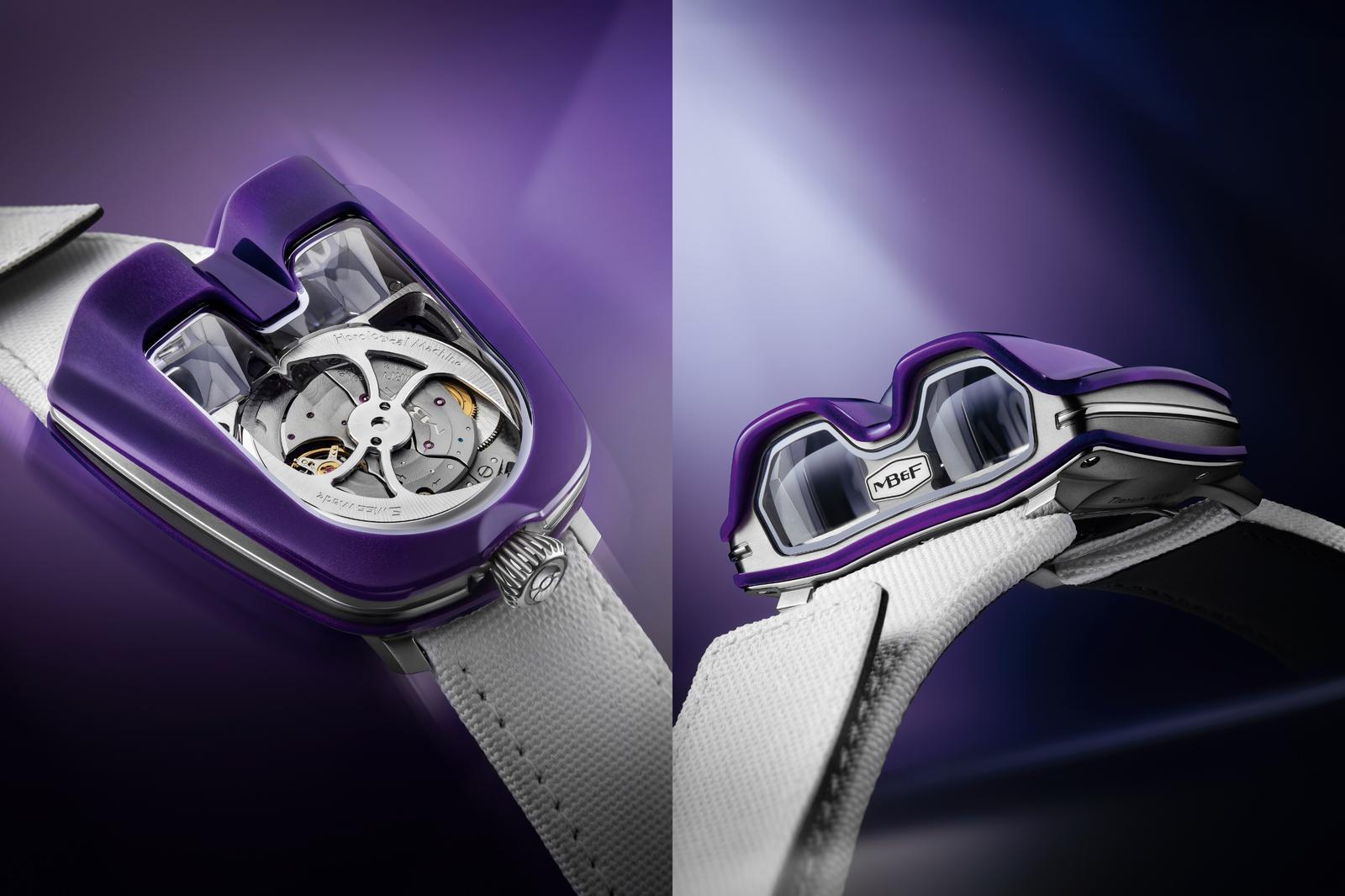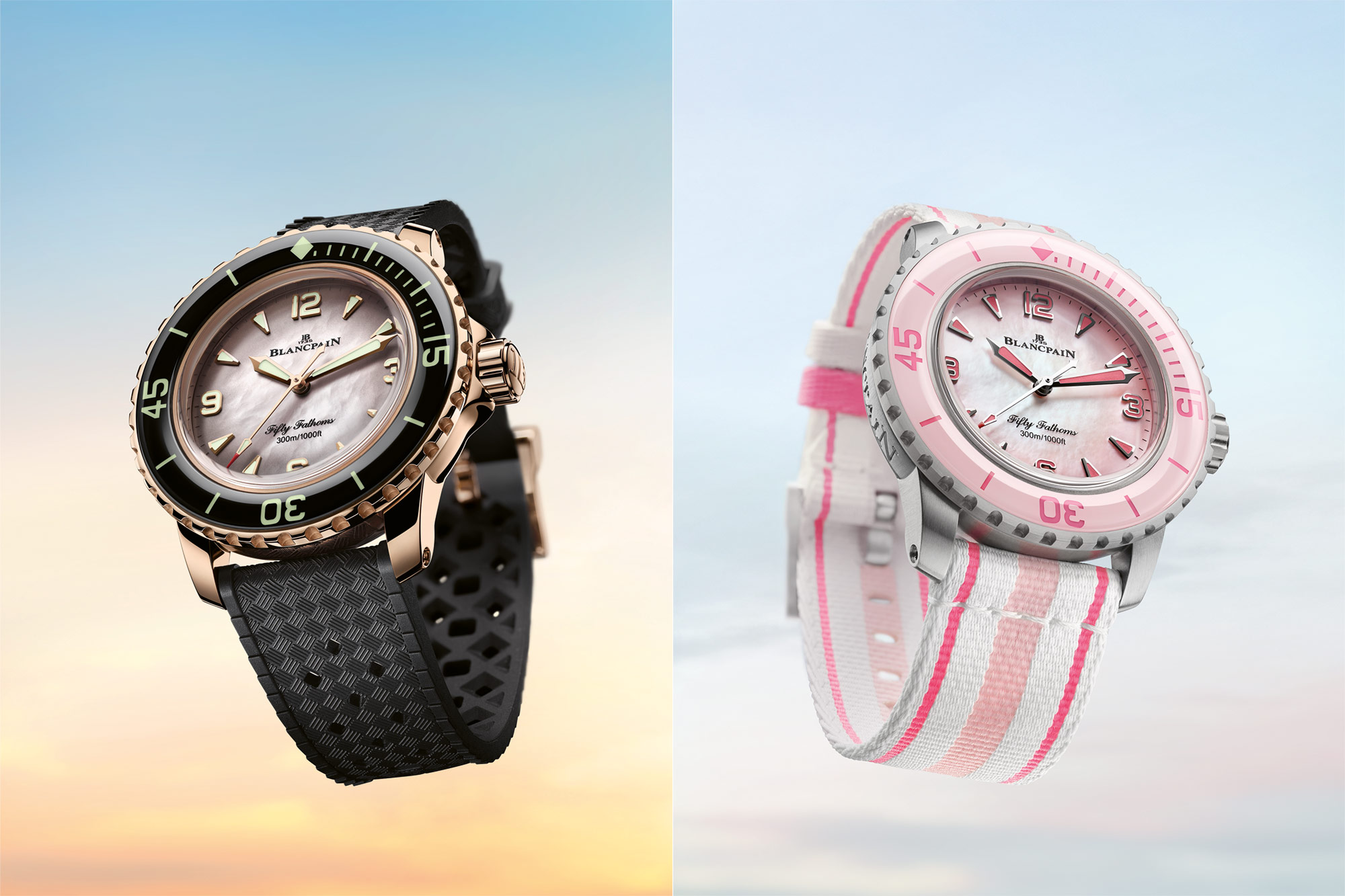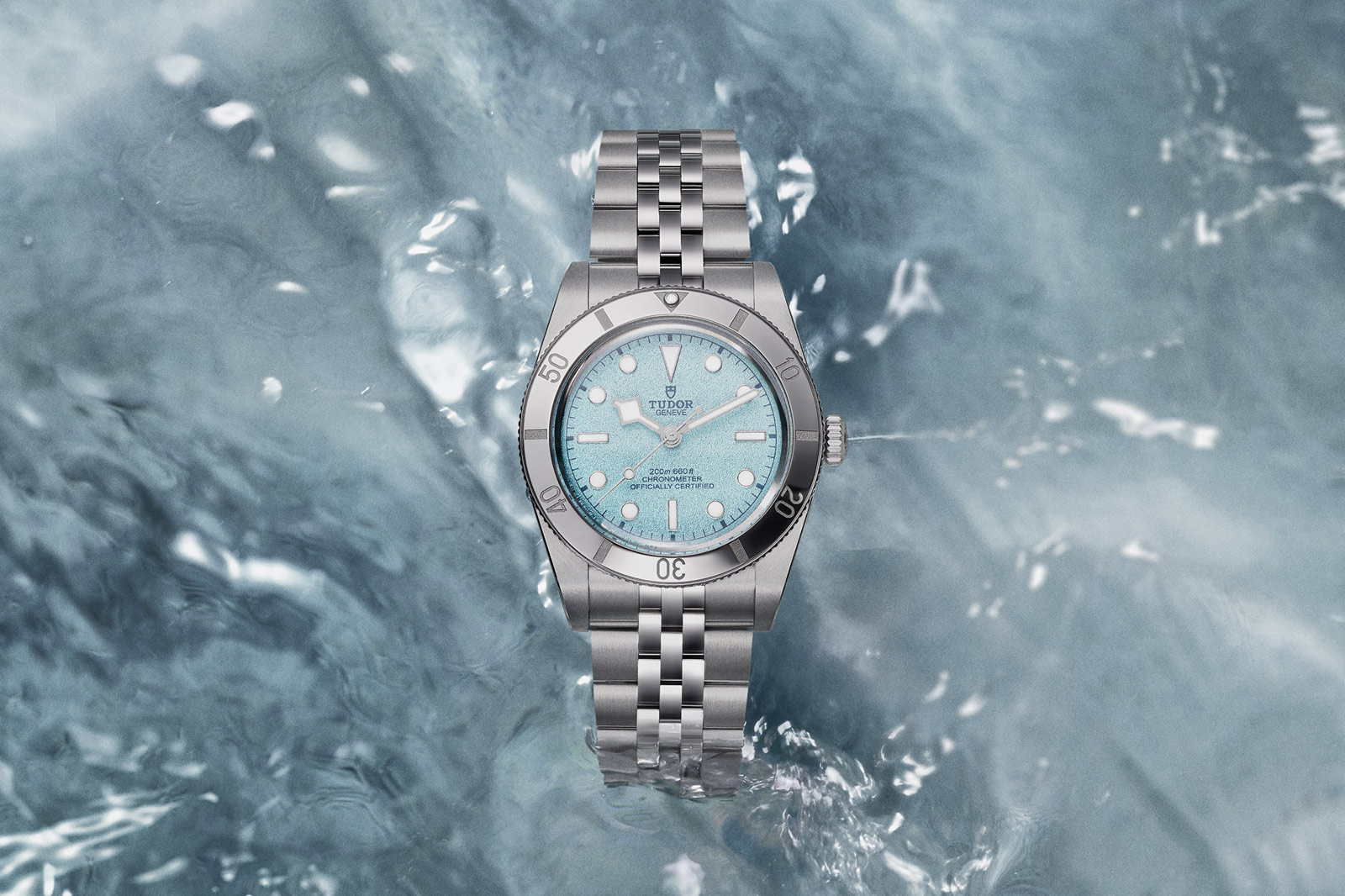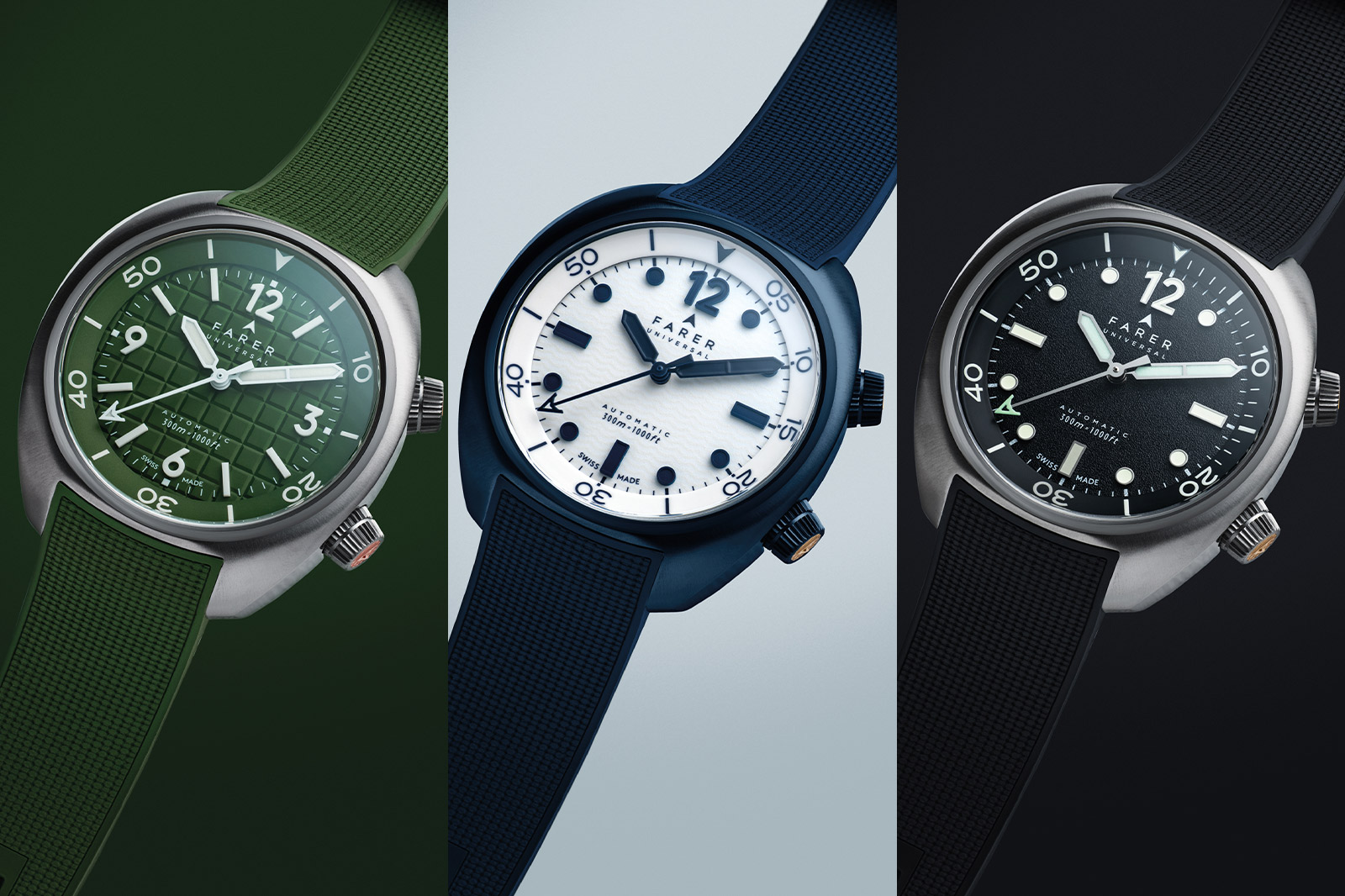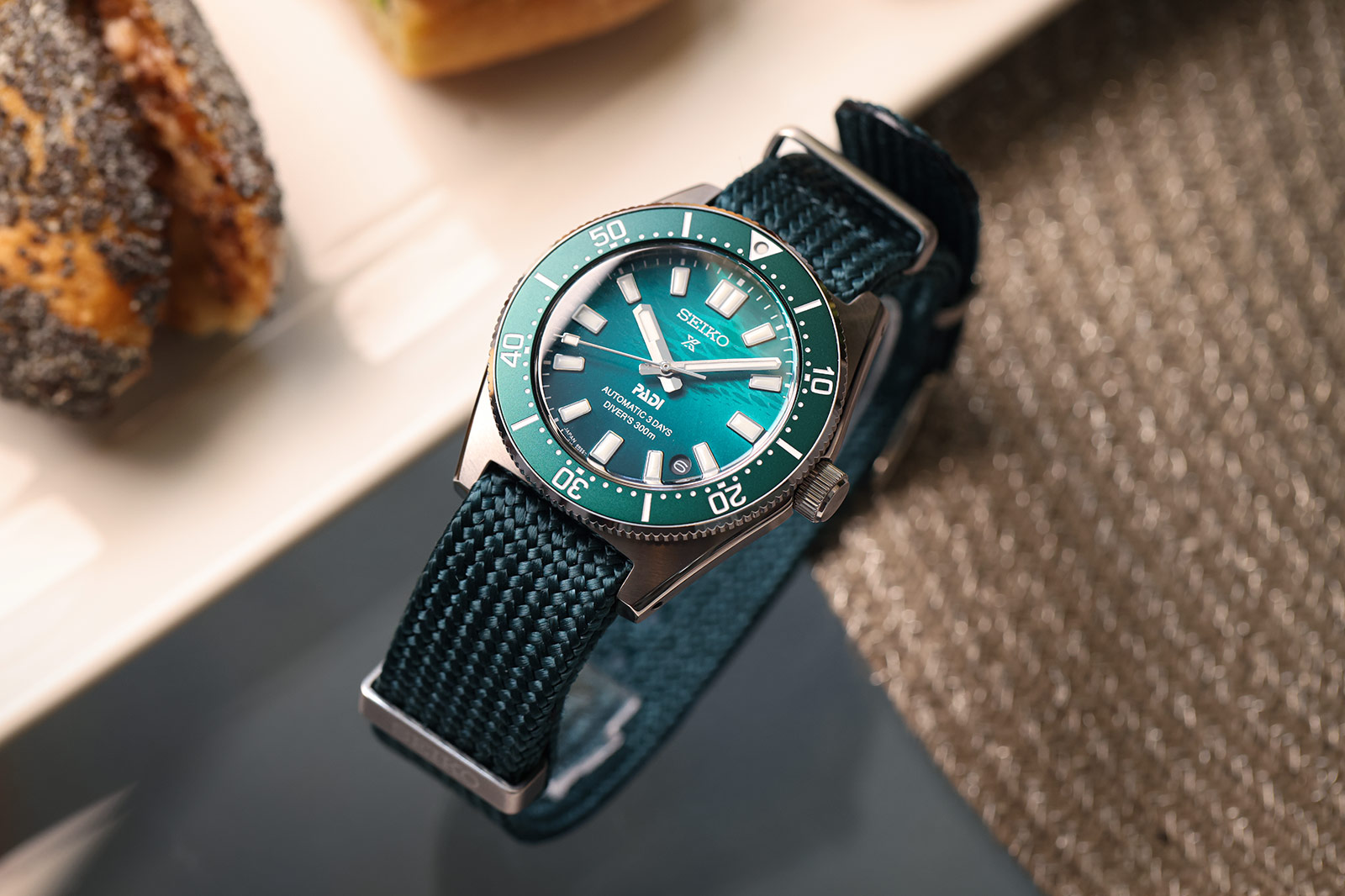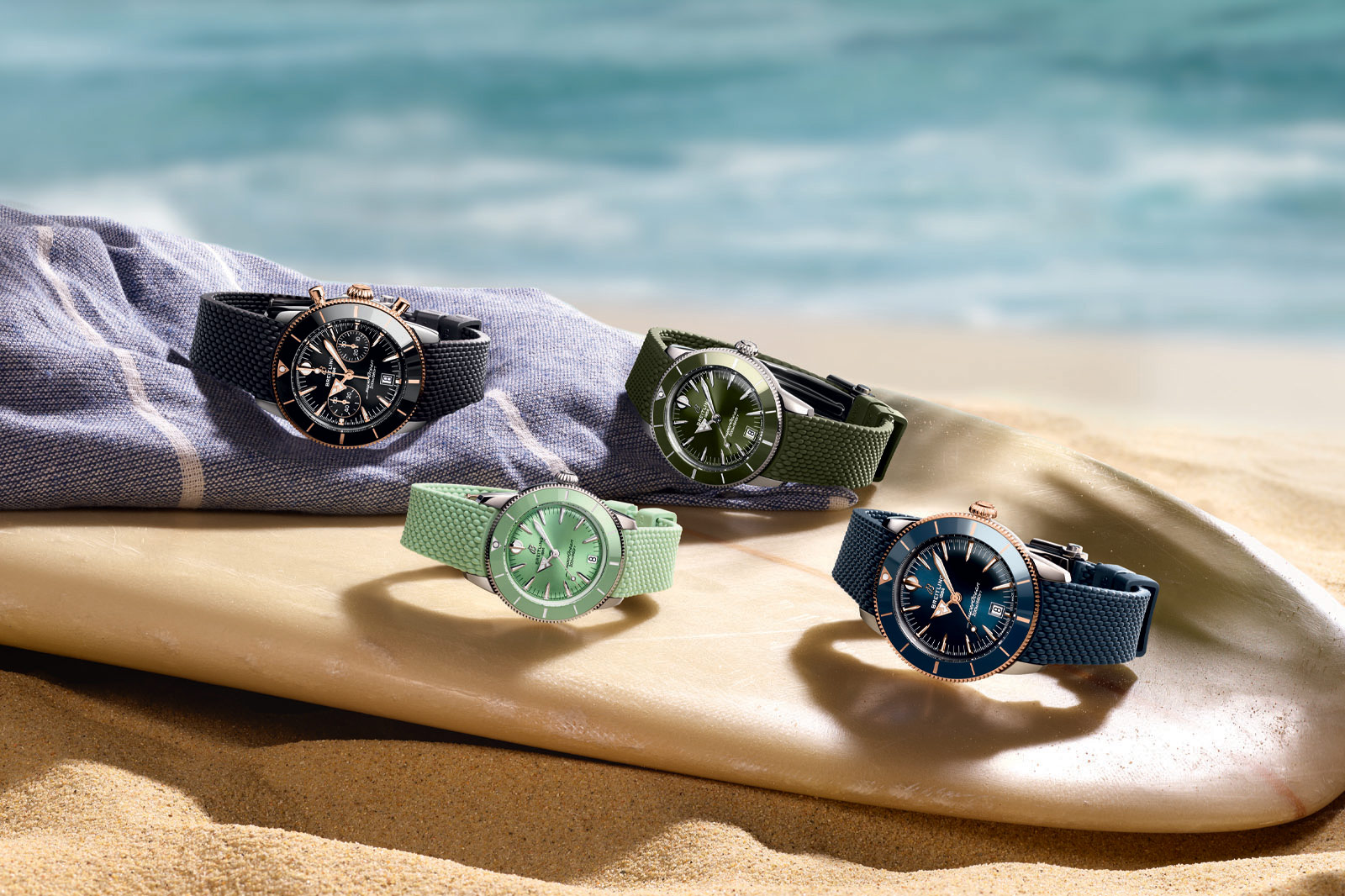


In general Breitling have two styles of watch release. They either release one or two watches at a time in solo launches like the recent Cosmonaute or they launch an entire collection all at once with dozens of new references. Today they’ve done the latter with a complete revamp of the Superocean Heritage range consisting of a whopping 30 references. Admittedly Breitling provide individual refs. for each strap or bracelet option, but that means there’s 15 new watches, including a Kelly Slater Limited Edition, which is still a lot. So as we have little time to waste, let’s get into it.
Breitling Superocean Heritage Automatic 44/42/40/36

The core part of the refresh of the Superocean Heritage collection is the revamp of the 3-hand automatic with date. Previously it was available at 44mm and 42mm, and those size options have been retained along with the addition of new 40mm and 36mm editions for people who prefer smaller watches. They’re made from steel with a handful of references featuring bi-metallic crowns and bezels in red gold.
The style of the case is largely unchanged with curvy lugs, a large crown and a unidirectional rotating bezel with baton markers. Most dive watches use Arabic numerals on their bezel to denote 60 minutes, but the omission here allows you to use it for minutes or hours depending on the situation. It features a 200m water resistance rating, making it suitable for aquatic activities like surfing, which will be relevant later in this article.

For the dials, they’ve opted for a completely new design that’s inspired by the 57 Highlands edition. It features the signature circle hour marker at 12 o’clock but instead of also having them at the other cardinal points like the 57 Highlands it has the bullet shaped indices with lume filled centres. Though the 6 o’clock marker is completely replaced by a date window for some extra utility day to day rather than for aquatic excursions. It makes it a great desk diver (especially the bi-metal editions).
As for colours, the Breitling Superocean Heritage B31 Automatic 44 is available in black, green and bi-metal blue. Superocean Heritage B31 Automatic 42 is available in black, green, blue and bi-metal black. Superocean Heritage B31 Automatic 40 is available in black and green. Lastly Superocean Heritage Automatic 36 is available in blue or mint green. That’s a lot of options, each offered on either a rubber strap or mesh steel bracelet.

Powering the watches is one of two calibres. The three larger models all house the manufacture B31 automatic that was revealed earlier this year, a first for the Superocean Heritage range, naturally. It has 78-hour power reserve and COSC chronometer certification. The 36mm version instead houses the Breitling calibre 10, which is also a chronometer movement but only has a 42-hour power reserve. For prices, please check the tech spec below.
Price and Specs:
Model:
Breitling
Superocean Heritage Automatic
Ref:
AB3112241B1S1
(black, 44mm, rubber), AB3112241B1A1 (black, 44mm, bracelet), AB3112361L1S1 (green, 44mm, rubber strap), AB3112361L1A1 (green, 44mm, bracelet), UB3112161C1S1 (blue, 44mm, rubber strap) , UB3112161C1A1 (blue, 44mm, bracelet), AB3111241B1S1 (black, 42mm, rubber), AB3111241B1A1 (black, 42mm, bracelet), AB3111161C1S1 (blue, 42mm, rubber strap), AB3111161C1A1 (blue, 42mm, bracelet), AB3111361L1S1 (green, 42mm, rubber strap), AB3111361L1A1 (green, 42mm, bracelet), UB3111241B1S1 (black, 18k red gold, 42mm, rubber), UB3111241B1A1 (black, 18k red gold, 42mm, bracelet); AB3110241B1S1 (green, 40mm, rubber strap), AB3110241B1A1 (green, 40mm, bracelet), AB3110361L1S1 (black, 40mm, rubber), AB3110361L1A1 (black, 40mm, bracelet), A10390161C1S1 (blue, 36mm, rubber strap), A10390161C1A1 (blue, 36mm, bracelet), A10390361L1S1 (mint green, 36mm, rubber strap), A10390361L1A1 (mint green, 36mm, bracelet)
Case:
44mm
x 12.17mm thickness, stainless steel or stainless steel & 18k red gold (44mm); 42mm x 12.03mm thickness, stainless steel or stainless steel & 18k red gold (42mm); 40mm x 11.73mm thickness, stainless steel (40mm); 36mm x 10.42mm thickness, stainless steel (36mm)
Dial:
Black,
blue, green or mint green, Super-LumiNova® indexes and hands
Water resistance:
200m
(20 bar)
Movement:
Breitling
calibre B31 (40mm/42mm/44mm), Breitling calibre 10 (36mm)
Frequency:
28,800
vph (4 Hz)
Power reserve:
78h
(B31), 42h (Calibre 10)
Functions:
Hours,
minutes, seconds, date
Strap:
Rubber
strap or Stainless steel bracelet
Price:
£4,400
(36mm, rubber strap), £4,650 (36mm, bracelet), £5,200 (40mm/42mm/44mm, rubber strap), £5,400 (40mm/42mm/44mm, bracelet)
Breitling Superocean Heritage B31 Automatic Kelly Slater

Kelly Slater is a legend of surfing with 11 world titles and 56 event wins to his name. In most sports that level of domination is almost unfathomable, but Slater redefined the game for over three decades. He now resides in one of the surfing capitals of the world, Hawaii. In celebration of his legacy and the islands he calls home, Breitling have released the Superocean Heritage B31 Automatic Kelly Slater.
Structurally it’s identical to the Superocean Heritage B31 Automatic 40 above with the same case shape and 200m water resistance rating. Watch water resistance can sometimes be a confusing subject because some brands account for water pressure when a watch is moving underwater and others don’t. In surfing you have the added issue of the intense pressure experienced when you hit the water after falling in, combined with the shock of the impact. As such, 200m might sound like overkill for staying at the surface but it’s necessary to provide confidence that your watch will survive the waves.

The homage to Hawaii can be found on the dial, with a floral motif inspired by plants found on the tropical islands. If you were ever disappointed that there was no watch to pair with your Hawaiian shirt, boy do I have news for you. The blue tone keeps it feeling suitably aquatic for Slater’s profession as well.
Like the other 40mm models, the Breitling Superocean Heritage B31 Automatic Kelly Slater houses the new B31 movement with 78-hour power reserve. It’s visible through an exhibition caseback, which is also engraved around the periphery with the phrases ‘Kelly Slater Limited Edition’ and ‘One of 500’, denoting its limited-edition status with 500 pieces available. It’s priced at £5,350 on rubber strap or £5,600 on steel mesh bracelet.
Price and Specs:
Model:
Breitling
Superocean Heritage B31 Automatic 40 Kelly Slater
Ref:
AB31101A1C1S1
(rubber strap), AB31101A1C1A1 (bracelet)
Case:
40mm
diameter x 11.73mm thickness, stainless steel, ceramic bezel, sapphire crystal caseback
Dial:
Blue
with tropical foliage pattern, Super-LumiNova® indexes and hands
Water resistance:
200m
(20 bar)
Movement:
Breitling
calibre B31
Frequency:
28,800
vph (4 Hz)
Power reserve:
78h
Functions:
Hours,
minutes, seconds, date
Strap:
Blue
rubber strap or Stainless steel bracelet
Price:
£5,350
(rubber strap), £5,600 (bracelet), limited to 500 pieces
Breitling Superocean Heritage B01 Chronograph 42

In addition to the myriad 3-hand models, Breitling are also revamping the chronograph offering with the new Superocean Heritage B01 Chronograph 42. It takes the 42mm case of the standard automatic and adds a pair of chronograph pushers flanking the crown at 3 o’clock to control the extra chrono function. The pushers are in the classic pump style, which I like because they feel the most retro while still having a modern edge.
For the chronograph layout they’ve opted for a bicompax with small seconds at 9 o’clock and a 30-minute timer at 3, retaining the date window at 6. It looks great with that Highlands style circle hour marker at 12 balancing the display. It feels very sporty in any context, not just as a diver, especially when presented on the rubber strap over the steel bracelet. The colours also lean into that with blue and green or a more luxury bi-metal black.

Housed inside is the Breitling B01 chronograph movement, a COSC Chronometer chronograph with 70-hour power reserve. It’s one of Breitling’s premier movements, which contributes to the watch being priced at between £7,200 and £8,550 depending on the strap/bracelet and steel/bi-metal combinations.
My biggest takeaway from this Superocean Heritage revamp is that the watches feel more retro than ever, giving them a more distinct separation from the standard Superocean. The stylised hour markers give way more character and the upgraded movements are welcome. Plus, new size options open the collection to a brand-new sector of collectors.
Price and Specs:
Model:
Breitling
Superocean Heritage B01 Chronograph 42
Ref:
AB0156161C1S1
(blue, rubber strap), AB0156161C1A1 (blue bracelet), AB0156361L1S1 (green, rubber strap), AB0156361L1A1 (green, bracelet), UB0156H11B1A1 (black, rubber strap), UB0156H11B1S1 (black, bracelet)
Case:
42mm
diameter x 14.55mm thickness, stainless steel or stainless steel & 18k red gold, ceramic bezel, sapphire crystal caseback
Dial:
Blue,
green or black, Super-LumiNova® indexes and hands
Water resistance:
200m
(20 bar)
Movement:
Breitling
calibre 01, 312 parts
Frequency:
28,800
vph (4 Hz)
Power reserve:
70h
Functions:
Hours,
minutes, seconds, date, chronograph
Strap:
Rubber
strap or Stainless steel bracelet
Price:
£7,200
(blue and green, rubber strap), £7,400 (blue and green, bracelet), £8,250 (black, rubber strap), £8,550 (black, bracelet)
More details at Breitling.
Oracle Time
